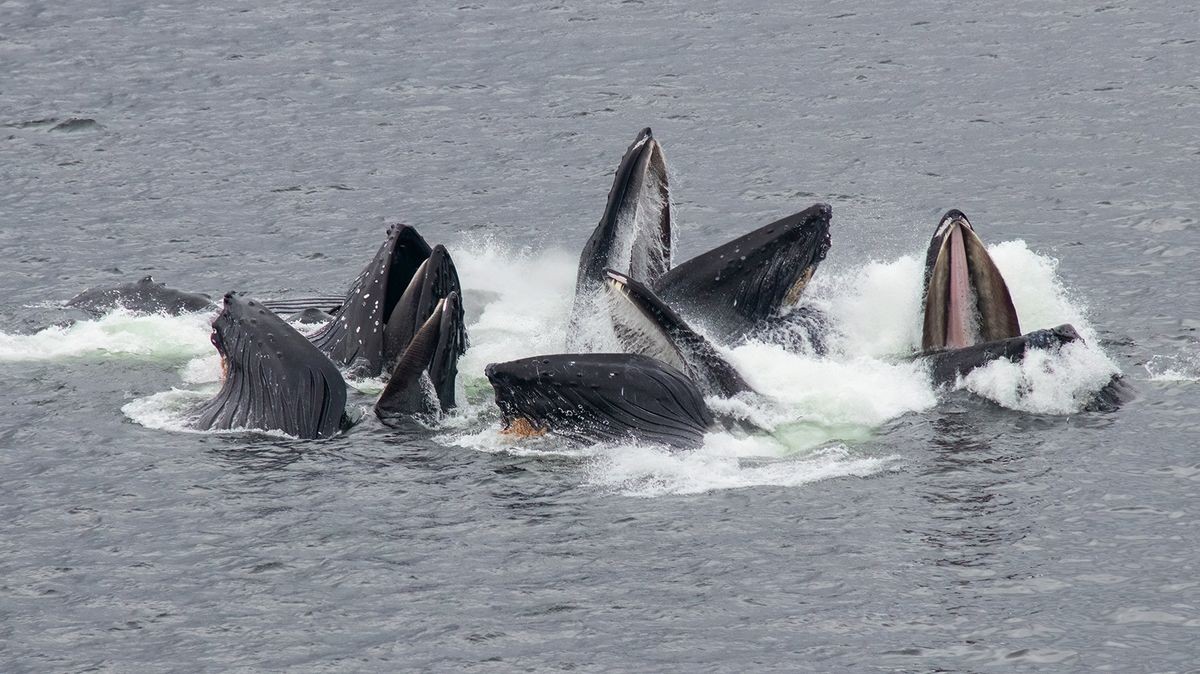Whales, the largest mammals on Earth, exhibit complex social behaviors, often congregating in groups. These groups have specific names—pods, gams, and herds —each reflecting how whales interact and survive in the ocean. Understanding these terms isn’t just a matter of trivia; it reveals insights into whale biology and social dynamics.
Why Collective Names Matter
The way we describe animal groups isn’t arbitrary. Collective nouns often hint at how the species functions. For whales, these groupings aren’t just random assemblies; they are crucial for hunting, breeding, protection, and navigation. The name used can even reflect historical context or the specific species in question.
Pods: The Most Common Term
The term pod is most frequently used to describe whale groups, particularly among smaller species like orcas (killer whales) and dolphins. A pod typically consists of related individuals—often a mother and her offspring—who remain together for life. This tight-knit structure allows for cooperative hunting, shared childcare, and effective defense against predators.
Pods operate with a clear social hierarchy and communication system, ensuring the group’s survival. These familial bonds make pods the most stable and recognizable whale groupings.
Gams and Herds: Historical and Modern Usage
While pod is the standard term, gam and herd are also used to describe whale groups. Gam is an older nautical term, historically used by sailors to refer to a group of whales. It’s less common in modern scientific literature but still appears in historical texts.
Herd, on the other hand, is a more general term that describes a larger, less structured gathering of whales. This term is often used when discussing baleen whales like humpbacks, who may form temporary aggregations during feeding or migration.
Social Structures and Group Behavior
Whale social structures vary significantly depending on the species. Toothed whales, like orcas and sperm whales, form highly organized pods with clear leadership and cooperative hunting strategies. These pods rely on echolocation and complex communication to coordinate their movements and maximize their hunting efficiency.
Baleen whales, while less social than their toothed counterparts, still gather in groups during feeding and breeding seasons. These aggregations provide protection from predators and facilitate mating opportunities.
Avoiding Misnomers: Why Not “School”?
The term school is commonly used for fish swimming in large groups, but it’s incorrect when applied to whales. Fish schools move in synchronized formations as a defensive tactic, creating a visual illusion to confuse predators.
Whale groups, however, are more strategic and less uniform. They coordinate movements to corral prey, protect calves, or navigate migration routes. The difference reflects the distinct evolutionary paths and social complexities of fish versus whales.
Superpods: Temporary Mega-Gatherings
Under certain conditions, whales may form superpods —massive gatherings of hundreds or even thousands of individuals. These temporary aggregations occur in rich feeding grounds or during seasonal migrations, where whales exploit abundant food resources.
Superpods are not typical day-to-day behavior but rather opportunistic gatherings driven by ecological factors. They highlight the flexibility and adaptability of whale social behavior.
Pod Size and Dynamics
Most whale pods range from two to thirty individuals, depending on the species and environmental conditions. Larger pods may form when multiple families join forces for hunting or defense.
The dynamics within a pod are complex, with individuals playing different roles based on age, sex, and social status. These hierarchies ensure efficient cooperation and group cohesion.
In conclusion, collective names for whales—pods, gams, and herds—reflect not just how these animals gather, but also their social structures, hunting strategies, and evolutionary adaptations. Understanding these terms provides valuable insights into the complex lives of these magnificent marine mammals
